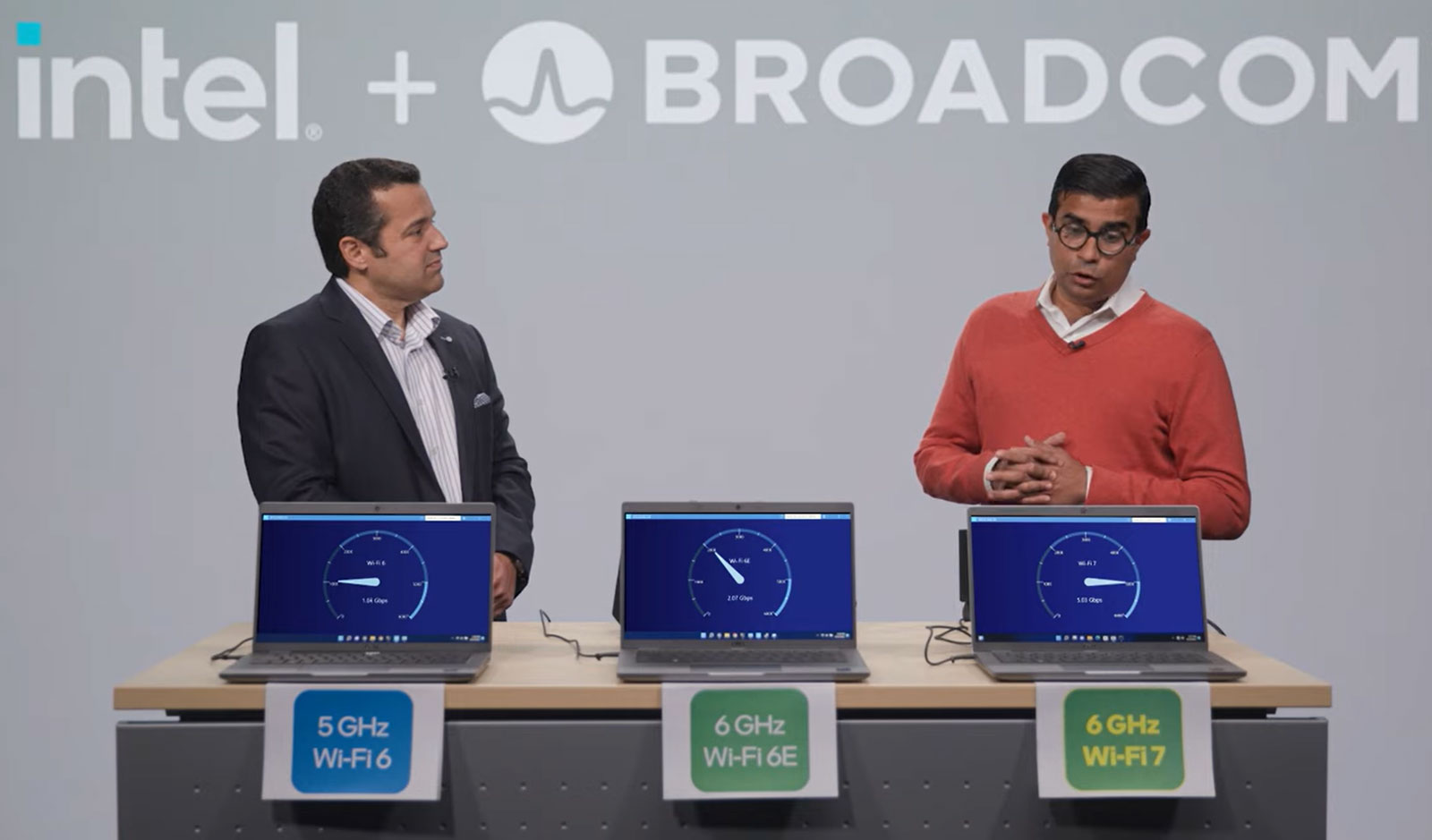Intel and Broadcom Demo Wi-Fi 7 Transfer Speeds of 5 Gbps
This over air transfer is 5x faster than Wi-Fi 6 can achieve.
Intel has proclaimed that “the Wi-Fi future is here” after successfully demonstrating Wi-Fi 7 technology with partner Broadcom. In the over-the-air demos, a Wi-Fi 7 connection between an Intel Core-powered laptop and a Broadcom access point achieved a steady 5 Gbps transfer speed. This is a worthwhile upgrade versus Wi-Fi 6, which maxes out at 1 Gbps.
As the Intel news blog highlights, industry collaboration is essential to ensure the widespread adoption of Wi-Fi 7 and its practical benefits. Having one Wi-Fi 7 in one category of devices but no other is pretty useless.
Broadcom chimed in to assert that “the ecosystem is ready.” It highlighted the value of Wi-Fi 7 goes beyond simple speed increases to deliver greater network capacity and the benefits of much lower latencies. The reduced latencies will be invaluable for immersive experiences over Wi-Fi, with the most obvious applications being online gaming and reduced latency wireless VR headsets. For media streamers, it also opens up the eye-popping possibility of UHD 16K streaming (or more people on the network streaming 4K or 8K videos). Last but not least, the newest Wi-Fi standard could help reduce wireless network traffic jams in busy homes and offices.
The underlying technologies behind Wi-Fi 7 include wider 320 MHz channels in unlicensed 6GHz spectrum and higher order 4K QAM data modulation. Intel’s blog also outlined the importance of multi-link operation and improved channel utilization efficiency.
Video: demo compares Wi-Fi 6 on the 5 GHz band, vs. Wi-Fi 6E on the 6 GHz band, vs. Wi-Fi 7 on the 6 GHz band.
These are still early days for Wi-Fi 7, as it isn’t expected to be certified until next year, with products bearing the Wi-Fi 7 logo perhaps not appearing until H2 2023. However, last month an Intel exec was quoted as saying Wi-Fi 7 will start to be “installed in PC products such as laptops by 2024.” As one (code)name is never enough, Wi-Fi 7 devices will also be referenced as featuring the “Wi-Fi 802.11be” connectivity protocol.
A positive from the lengthy sounding rollout timescale is that Wi-Fi 7 speeds could be further enhanced in the interim. Hopefully, Wi-Fi 7 will catch on quickly, inspired by the attractive transfer speeds and latency benefits. It will also be welcomed if Wi-Fi 7 device rollout isn’t hampered by the component shortage problems, which slowed Wi-Fi 6E device availability.
Get Tom's Hardware's best news and in-depth reviews, straight to your inbox.

Mark Tyson is a news editor at Tom's Hardware. He enjoys covering the full breadth of PC tech; from business and semiconductor design to products approaching the edge of reason.
-
peachpuff Finally wifi will be faster than the 1gbps 20th century network ports that still come on some mobos...Reply -
setx Very strange numbers. My quite old Samsung S8 connects at 1.083 Gbps and that's 802.11ac wave1 2x2 (so called "Wi-Fi 5"). Actual transfer speed is of course a bit less, like -10%.Reply
So that "Wi-Fi 6, which maxes out at 1 Gbps" is complete nonsense.
